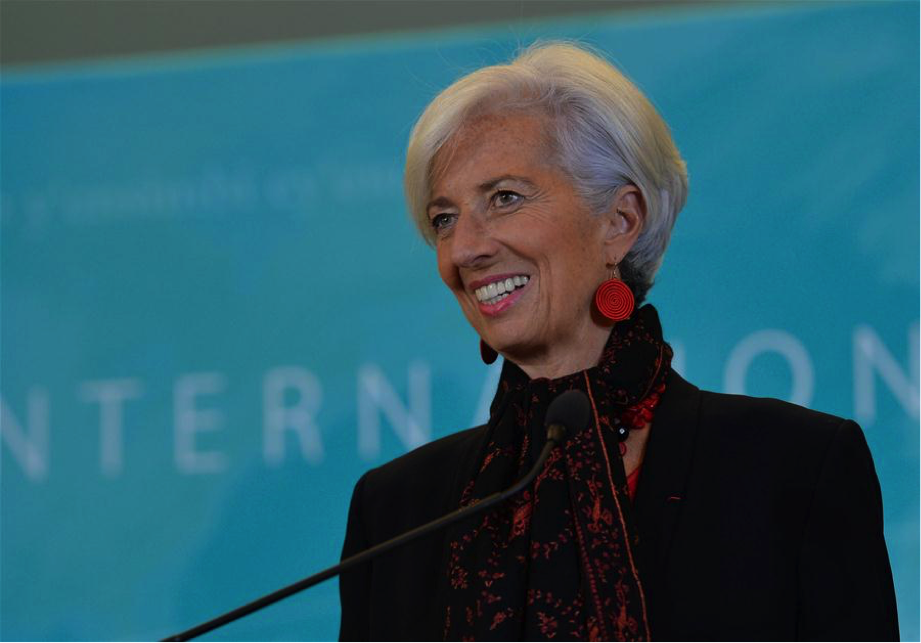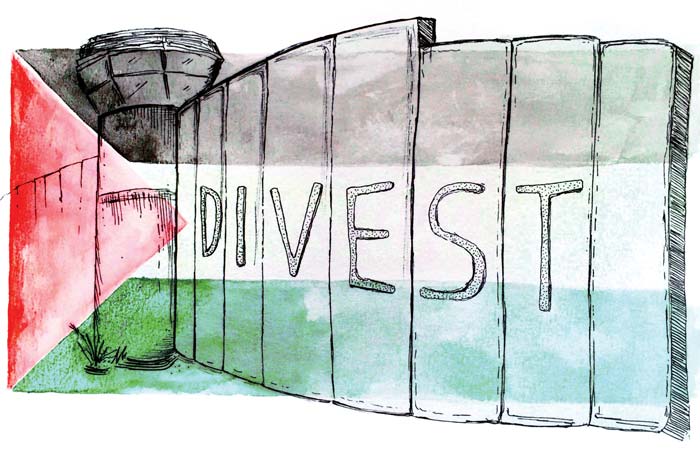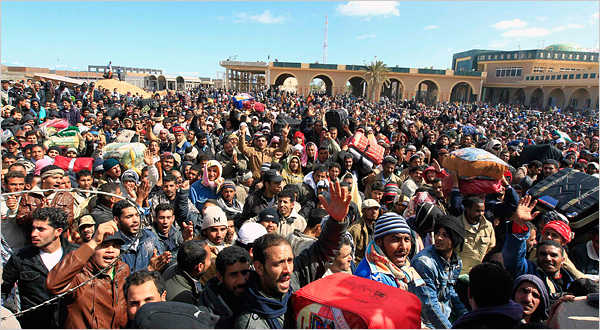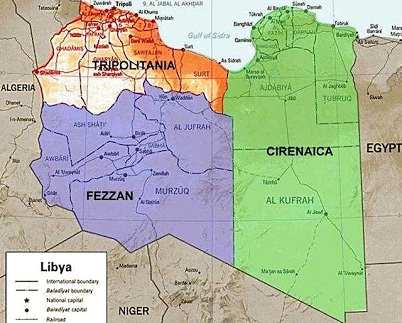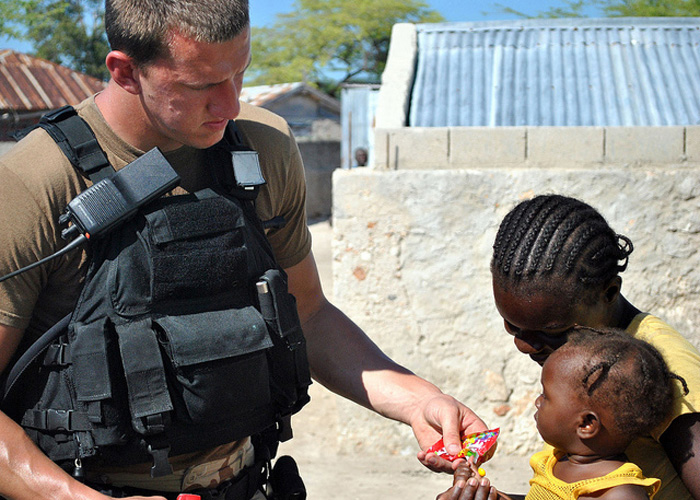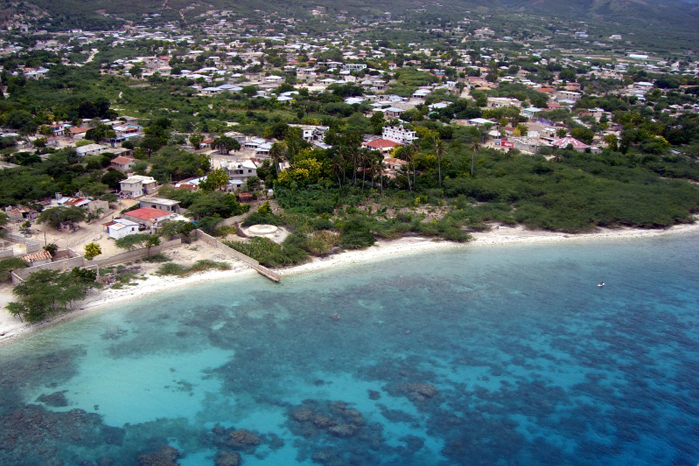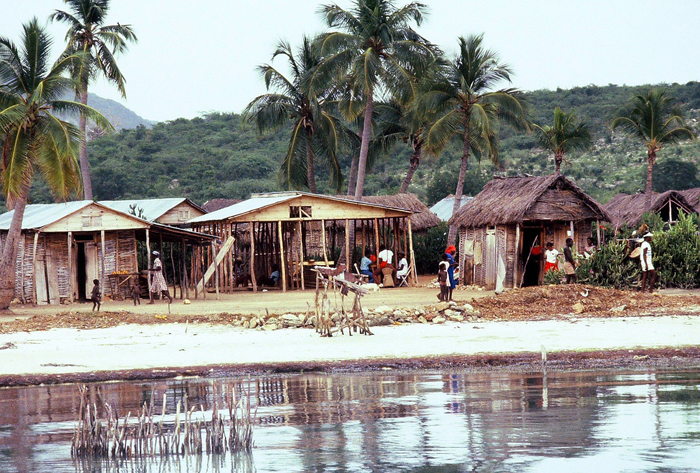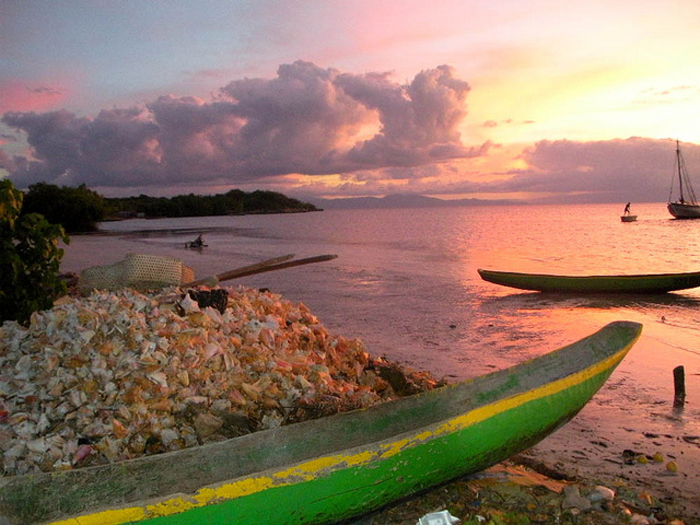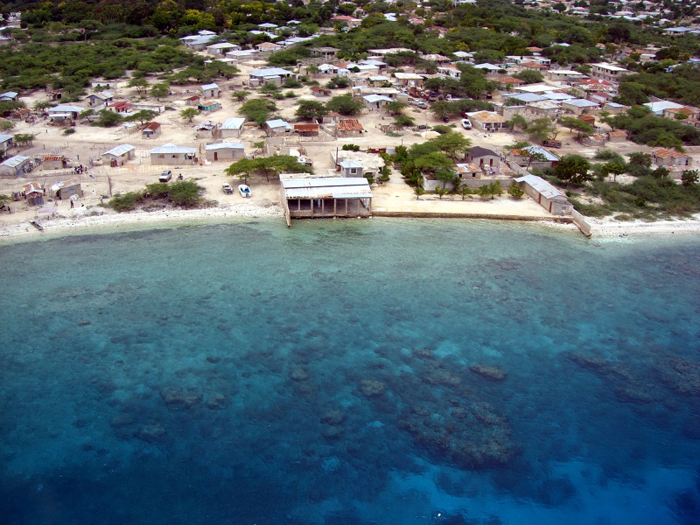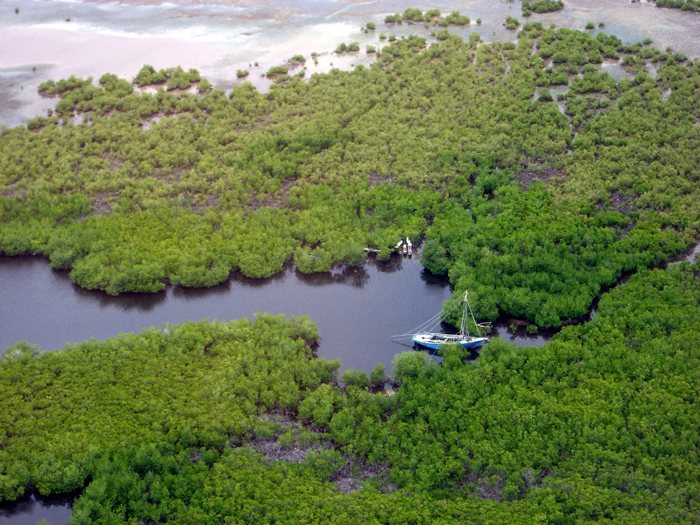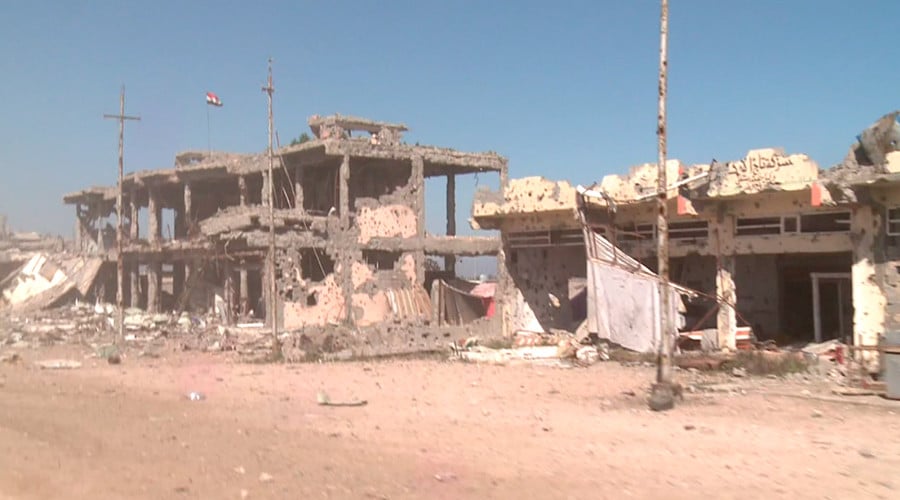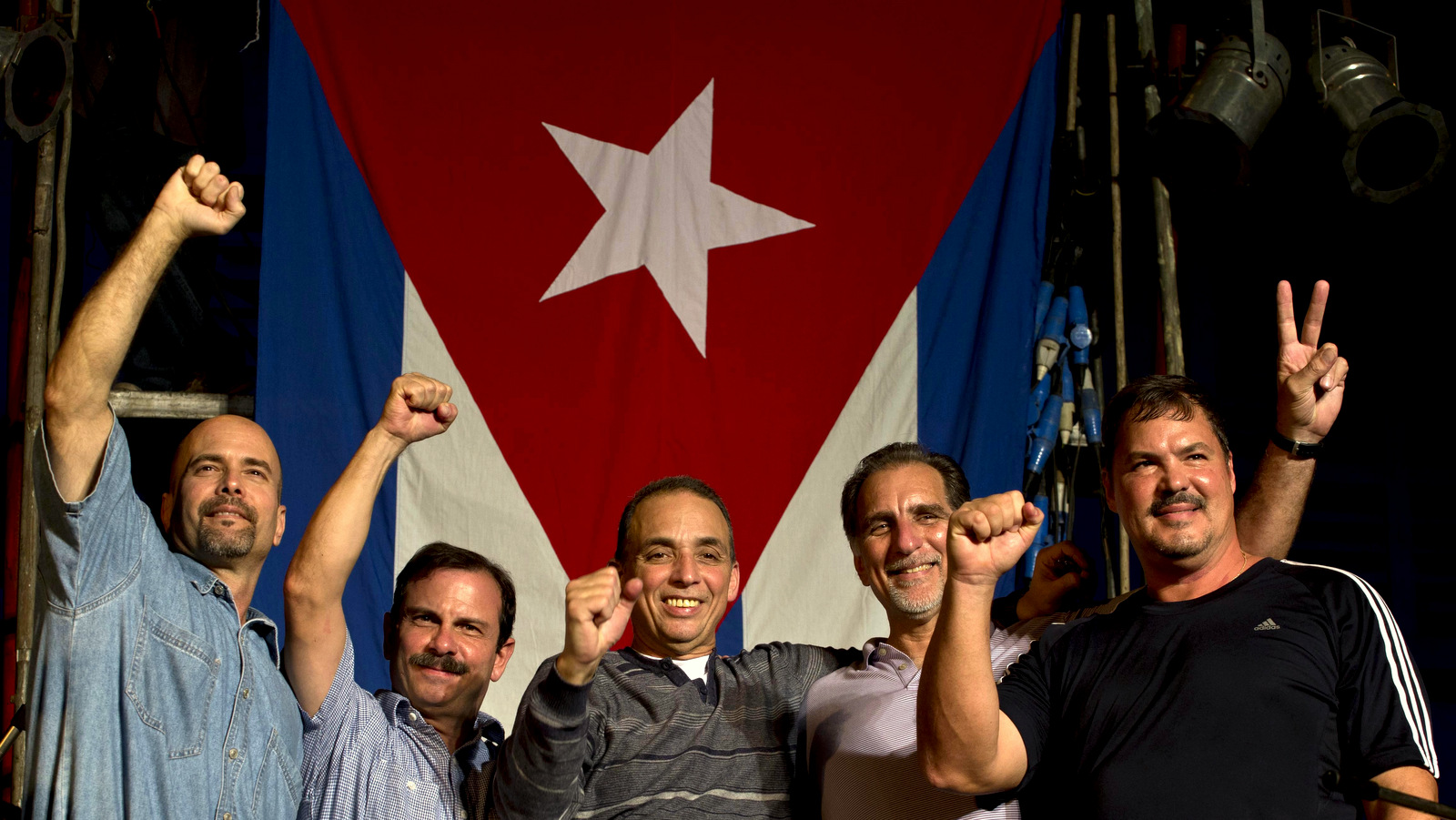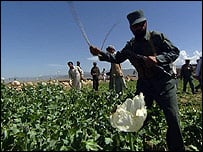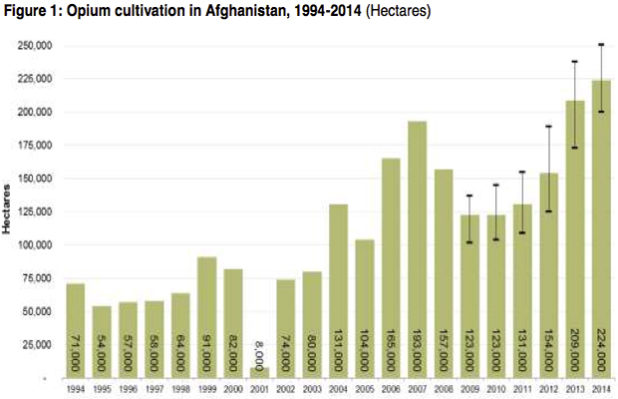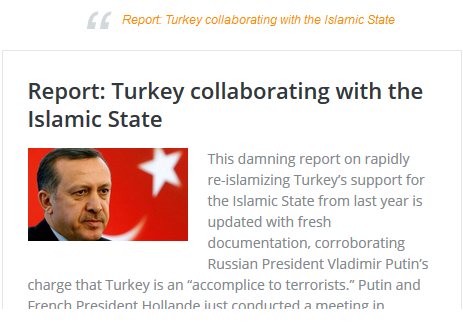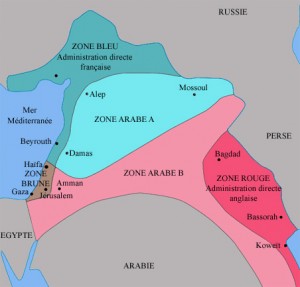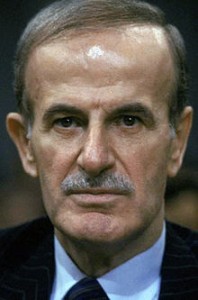Many commentators have mentioned (such as here and here and here and here) that Hillary Clinton left behind no major achievement as U.S. Secretary of State; but, actually, she did. Unfortunately, all of her major achievements were bad, and some were catastrophic. Six countries were especially involved: Honduras, Haiti, Afghanistan, Libya, Syria, and Ukraine. The harm she did to each country was not in the interest of the American people, and it was disastrous for the residents there.
Hillary Clinton at every campaign debate says “I have a better track-record,” and that she’s “a progressive who gets things done.” Here’s what she has actually done, when she was Secretary of State; here’s her track-record when she actually had executive responsibility for U.S. foreign-affairs. This will display her real values, not just her claimed values:
SUMMARY OF THE CASE TO BE PRESENTED
The central-American nation of Honduras is ruled today by an extremist far-right government, a fascist junta-imposed government, because of what Hillary Clinton and Barack Obama did in 2009. The lives of all but the top 0.001% of the population there are hell because of this.
The matter in Haiti was similar but less dramatic, and so it received even less attention from the U.S. Press.
Furthermore, under Secretary of State Clinton, failures at the U.S. Department of State also caused the basis for a hatred of the United States to soar in Afghanistan after the U.S. has drawn down its troops there. This failure, too, has received little coverage in the U.S. press, but our nation will be paying heavily for it long-term.
Hillary Clinton was the Administration’s leading proponent of regime-change, overthrowing Muammar Gaddafi in Libya. That worked out disastrously.
Clinton was also the Secretary of State when the 2006-2010 drought was causing massive relocations of population in Syria and U.S. State Department cables passed along up the chain of command the Assad government’s urgent request for aid from foreign governments to help farmers stave off starvation. The Clinton State Department ignored the requests and treated this as an opportunity to foment revolution there. It wasn’t only the Arab Spring, in Syria, that led to the demonstrations against Assad there. Sunni jihadist fighters streamed into Syria, backed by the U.S., Saudi Arabia, Qatar, and Turkey. The U.S. was, in effect, assisting jihadists to oust the non-sectarian, secular Shiite leader of Syria and replace him with a fundamentalist Sunni dictator.
The groundwork for a coup d’etat in Ukraine was laid by Hillary Clinton, when she made her State Department’s official spokesperson Victoria Nuland, who had been the chief foreign-affairs advisor to Vice President Dick Cheney. Nuland then became the organizer of the 20 February 2014 coup in Ukraine, which replaced a neutralist leader of Ukraine, Viktor Yanukovych, with a rabidly anti-Russian U.S. puppet, Arseniy Yatsenyuk, and a bloody civil war. Nuland is obsessed with hatred of Russia.
On top of all that, Hillary Clinton is incredibly corrupt. And she treats subordinates like trash.
No well-informed Democrat will vote for her in the Democratic Party primaries. Here is what voters in the Democratic primaries need to know before they vote:
HONDURAS
On 28 June 2009, the Honduran military grabbed their nation’s popular democratically elected progressive President, Manuel Zelaya, and flew him into exile.
The AP headlined from Tegucigalpa the next day, “World Leaders Pressure Honduras to Reverse Coup,” and reported: “Leaders from Hugo Chavez to Barack Obama called for reinstatement of Manuel Zelaya, who was arrested in his pajamas Sunday morning by soldiers who stormed his residence and flew him into exile.”
Secretary Clinton, in the press conference the day after the coup, “Remarks at the Top of the Daily Press Briefing”, refused to commit the United States to restoration of the democratically elected President of Honduras. She refused even to commit the U.S. to using the enormous leverage it had over the Honduran Government to bring that about. Here was the relevant Q&A:
Mary Beth Sheridan. QUESTION: Madam Secretary, sorry, if I could just return for a second to Honduras, just to clarify Arshad’s point – so, I mean, the U.S. provides aid both under the Foreign Assistance Act and the Millennium challenge. So even though there are triggers in those; that countries have to behave – not have coups, you’re not going to cut off that aid?
SECRETARY CLINTON: Well, Mary Beth, we’re assessing what the final outcome of these actions will be. This has been a fast-moving set of circumstances over the last several days, and we’re looking at that question now. Much of our assistance is conditioned on the integrity of the democratic system. But if we were able to get to a status quo that returned to the rule of law and constitutional order within a relatively short period of time, I think that would be a good outcome. So we’re looking at all of this. We’re considering the implications of it. But our priority is to try to work with our partners in restoring the constitutional order in Honduras.
QUESTION: And does that mean returning Zelaya himself? You would insist on that in order to –
SECRETARY CLINTON: We are working with our partners.
She refused to answer the question, even though Zelaya had been an ally of the U.S., a progressive democrat. (Though Republicans decried Zelaya for pushing land-reform, the fact is that Honduras is virtually owned by two dozen families, and drastically needs to drag itself out of its feudal system. Doing that isn’t anti-American; it’s pro-American. It’s what Zelaya was trying to do, peacefully and democratically.
Our nation’s Founders fought a Revolution to overthrow feudalism – British – in our own country. Hillary was thus being anti-American, not just anti-democratic, here.) This is stunning. The U.S had even been outright bombed by fascists, on the “day that will live in infamy,” December 7, 1941; and, then, we spilled lots of blood to beat those fascists in WWII. What was that war all about, if not about opposing fascism and fascists, and standing up for democracy and democrats? A peaceful democratic U.S. ally had now been overthrown by a fascist coup in Honduras, and yet Hillary Clinton’s response was – noncommittal?
The coup government made no bones about its being anti-democratic. On July 4th of 2009, Al Giordano at Narcosphere Narconews bannered “Honduras Coup Chooses Path of Rogue Narco-State,” and he reported that,
“Last night, around 10 p.m. Tegucigalpa time, CNN Español interrupted its sports news programming for a live press conference announcement (‘no questions, please’) by coup ‘president’ Micheletti. There, he announced that his coup ‘government’ of Honduras is withdrawing from the Democratic Charter of the Organization of American States. … The Honduras coup’s behavior virtually assures that come Monday, the US government will define it as a ‘military coup,’ triggering a cut-off of US aid, joining the World Bank, the Inter-American Development Bank, PetroCaribe, the UN and the rest of the world in withdrawing economic support for the coup regime.”
But that didn’t happen. The U.S. just remained silent. Why was our Secretary of State silent, even now?
It certainly couldn’t have been so on account of her agent on the ground in Honduras, the U.S. Ambassador to that country: he was anything but noncommittal. He was fully American, not at all neutral or pro-fascist.
Here was his cable from the U.S. Embassy, reviewing the situation, for Washington, after almost a month’s silence from the Administration:
From: Ambassador Hugo Llorens, U.S. Embassy, Tegucigalpa, Honduras, 24 July 2009.
To: Secretary of State, White House, and National Security Council.
“SUBJECT: TFHO1: OPEN AND SHUT: THE CASE OF THE HONDURAN COUP”
This lengthy message from the Ambassador closed:
The actions of June 28 can only be considered a coup d’etat by the legislative branch, with the support of the judicial branch and the military, against the executive branch. It bears mentioning that, whereas the resolution adopted June 28 refers only to Zelaya, its effect was to remove the entire executive branch. Both of these actions clearly exceeded Congress’s authority. … No matter what the merits of the case against Zelaya, his forced removal by the military was clearly illegal, and [puppett-leader Roberto] Micheletti’s ascendance as ‘interim president’ was totally illegitimate.
On the same day when the Ambassador sent that cable, AFP headlined “Zelaya ‘Reckless’ to Return to Honduras: Clinton,” and reported that our Secretary of State criticized Zelaya that day for trying to get back into his own country. “‘President Zelaya’s effort to reach the border is reckless,’ Clinton said during a press conference with visiting Iraqi Prime Minister Nouri al-Maliki. … Washington supports ‘a negotiated peaceful solution to the Honduran crisis,’ Clinton said.” It wasn’t “the Honduran coup” – she wouldn’t call it a “coup” – it was “the Honduran crisis”; so, she accepted the junta’s framing of the issue, not the framing of it by Zelaya and everyone other than the fascists. She wanted “a negotiated peaceful solution” to the forced removal at gunpoint of Honduras’s popular democratically elected President. Furthermore, Hillary’s statement here was undiplomatic: if she had advice for what the elected President of Honduras ought to be doing, that ought to have been communicated to him privately, not publicly, and said to him by suggesting what he ought to do, not by insulting what he already was doing, publicly calling it “reckless.” Such a statement from her was clearly not meant as advice to help Zelaya; it was meant to – and did – humiliate him; and diplomats around the world could see this. Manifestly now, Hillary Clinton supported the fascists. However, her boss, the U.S. President, stayed silent.
During the crucial next two weeks, Obama considered what to do. Then, on 6 August 2009, McClatchy newspapers bannered “U.S. Drops Call to Restore Ousted Honduran Leader,” and Tyler Bridges reported that Zelaya wouldn’t receive U.S. backing in his bid to be restored to power. Though all international organizations called the Honduran coup illegitimate, and refused to recognize the leader chosen by its junta, the Obama Administration, after more than a month of indecision on this matter, finally came out for Honduras’s fascists. According to James Rosen of McClatchy Newspapers three days later, the far-right Republican U.S. Senator Jim DeMint had “placed a hold on two nominees to senior State Department posts to protest Obama’s pushing for ousted Honduran President Manuel Zalaya’s return to power, which the administration backed away from last week.” Obama, after a month of silence, caved silently. Instead of his using the bully pulpit to smear the fascist DeMint publicly with his fascism, Obama just joined him in it, silently. Why?
Perhaps it was because the chief lobbyist hired in the U.S. by the Honduran aristocracy (whose thugs had installed this new Honduran government), was Hillary’s old friend, Lanny Davis. As slate.com had said on 27 August 2008, headlining “A Day in the Life of Hillary’s Biggest Fan”: “When it comes to defending Hillary Clinton, Lanny Davis has no rival.” He was the fascists’ fixer, inside the Obama Administration. On 9 July 2009, The Hillbannered “Hondurans Lobby Against Deposed Leader,” and reported that Honduras’s equivalent of the U.S. Chamber of Commerce (which was controlled by those two-dozen families) had hired “Lanny Davis, the former special counsel to President Bill Clinton,” and that, “The lobbying blitz began [6 July] Monday, one day before Zelaya met with Clinton as part of his push to be reinstated.” Lanny Davis had had his input to Hillary even before President Zelaya did. Moreover, The Hill reported that, “17 Republican senators, including Minority Leader Mitch McConnell (Ky.) [and DeMint] wrote Secretary Clinton and asked her to meet with officials from the interim government of Honduras.” America’s Republican leadership were immediately and strongly supporting Honduras’s fascists. This Republican Senators’ letter attacked “the rush to label the events of June 28th a coup d’etat,” and said that it instead reflected “‘the universal principle that people should choose their own leaders.’ In a 125-3 vote, the Honduran Congress approved of the actions taken to remove Mr. Zelaya from office and install Mr. Micheletti.” (The article “2009 Honduran coup d’état” at wikipedia says that after the military seized the President on June 28th, “Later that day, the Honduran Congress, in an extraordinary session, voted to remove Zelaya from office, after reading a false resignation letter attributed to President Zelaya.” A link to the forged letter was provided. To Republicans, that is how democracy is supposed to operate, not a “coup.” Just masked men with machine guns, and then forged documents and well-connected foreign lobbyists.)
So, the Honduran aristocracy (mainly the Facussé, Ferrari, Canahuati, Atala, Lamas, Nasser, Kattan, Lippman, and Flores, clans) had purchased a line straight to the U.S. Secretary of State, via Mr. Davis. And Obama caved. On 13 August 2009, Mark Weisbrot of the Center for Economic and Policy Research headlined a Sacramento Bee op-ed “Obama Tacitly Backs Military’s Takeover of Honduran Democracy” and he reported that the Administration’s recent “statements were widely publicized in the Honduran media and helped to bolster the dictatorship. Perhaps more ominously, the Obama administration has not said one word about the atrocities and human rights abuses perpetrated by the coup government. Political activists have been murdered, independent TV and radio stations have been shut down, journalists have been detained and intimidated, and hundreds of people arrested.” There was now, again as under Bush, widespread revulsion against the U.S. throughout Latin America. Also on the 13th, Dick Emanuelson, at the Americas Program of the Center for International Policy, headlined “Military Forces Sow Terror and Fear in Honduras,” and he described in Honduras a situation very much like that which had occurred in Argentina when the generals there took over in 1976 and rounded up and “disappeared” leaders who constituted a threat to the aristocracy’s continued rule in that country.
The U.S. was now the only power sustaining the Honduran junta’s government. Hillary had said “We are working with our partners,” but she lied. It turned out that the U.S. was instead working against “our partners” – against virtually all of the world’s democratic nations. Brazil Magazine headlined on August 13th, “Brazil Urges Obama to Tighten the Vise on Honduras to Get Zelaya Back,” and reported that Brazilian President Luiz Inacio Lula da Silva had urged President Obama to come out publicly for the “immediate and unconditional” restoration of Zelaya to office. It didn’t happen, however; and on Friday, August 21st, Mark Weisbrot thus bannered in Britain’sGuardian, “Obama’s Deafening Silence on Honduras: Seven weeks after the coup in Honduras, the US is hindering efforts to restore President Manuel Zelaya to power.” Weisbrot documented lies from the Obama Administration regarding the coup; and he noted, “The one thing we can be pretty sure of is that no major US media outlet will look further into this matter.” He was assuming that the U.S. had a controlled press, and it seems that he was correct, except for the McClatchy Newspaper chain, which courageously reported on the Honduran horrors.
Obama was lying – not even acknowledging that the coup was a coup – even though (as Weisbrot pointed out) “on Wednesday, Amnesty International issued a report documenting widespread police beatings and brutality against peaceful demonstrations, mass arbitrary arrests and other human rights abuses under the dictatorship. The Obama administration has remained silent about these abuses — as well as the killings of activists and press censorship and intimidation. To date, no major [U.S.] media outlet has bothered to pursue them.” America’s aristocracy were clearly supporting Honduras’s.
Nearly a hundred scholars signed a public letter saying that if only the U.S. were to come out clearly against the coup, “the coup could easily be overturned,” because only the U.S. was keeping the coup regime in power (via banking and other crucial cooperation with the coup government). The U.S. was key, and it chose to turn the lock on the Honduran prison, and leave its victims to be murdered.
During the following months, as the shamefulness of America’s position on this became increasingly untenable, Obama seemed to be gradually tilting back away from the coup in Honduras. However, Senator DeMint and some other Republicans travelled to Honduras and spoke publicly there against the U.S. Government, and endorsed the coup-installed Honduran leadership. DeMint headlined in Rupert Murdoch’s Wall Street Journal, on 10 October 2009, “What I Heard in Honduras,” and he wrote:
“In the last three months, much has been made of a supposed military ‘coup’ that whisked former Honduran President Manuel Zelaya from power and the supposed chaos it created. After visiting Tegucigalpa last week and meeting with a cross section of leaders, … I can report there is no chaos there. … As all strong democracies do after cleansing themselves of usurpers, Honduras has moved on.”
All governments in the hemisphere except the U.S. labeled the coup a “coup,” but DeMint and other top Republicans such as Mitch McConnell simply denied that it was. DeMint received ovations in Washington, at the far-right Heritage Foundation, which he now heads. This U.S. Senator condemned Zelaya there as “a deposed would-be Marxist dictator,” and he referred to the junta as “friends of freedom.” He condemned Obama by indirection, as being the enemy, who led “an American foreign policy unmoored from our commitment to human rights and human freedom and tied instead to the President’s personal ambition,” perhaps communist. Obama remained silent, in the face of these lies against both Zelaya and himself.
The assertion by Republicans that the coup was not a “coup” was a blatant lie. Everyone worldwide except America’s Republicans referred to it as a “coup.” Furthermore, Ambassador Llorens in Tegucigalpa was constantly speaking with leaders (but only leaders) of business, religious, civic, and other organizations throughout Honduras, and everyone he spoke with stated his position in regards to the “coup.” For example (from the Embassy cables), “Monsignor Juan Jose Pineda, the Auxiliary Bishop of Tegucigalpa … stated that the Church had not taken sides in relation to the coup d’etat,” but “vociferously condemned the poor treatment of the Church by what he believed to be elements of the anti-coup movement.” And the leaders of two conservative political parties “argued that anti-coup protests have not been peaceful.” Only America’s Republicans lied that it hadn’t been a “coup.” Not even Republicans’ friends in Honduras, the fascists there, did. It was a coup. Republicans simply lied, as usual. (This is why Fox “News” has been found in every study to have the most-misinformed audience of any major news medium – they’re being lied to constantly.)
On 5 October 2009, Jason Beaubien of NPR headlined “Rich vs. Poor at Root of Honduran Political Crisis,” and he reported that, though Honduran conservatives were charging that Zelaya secretly intended to make Honduras into a communist dictatorship, the actual situation in Honduras was, as explained by an economics professor there, that “power in Honduras is in the hands of about 100 people from roughly 25 families. Others estimate that Honduran elite to be slightly larger, but still it is a tiny group.” This professor “says the country’s elite have always selected the nation’s president. They initially helped Zelaya get into office, and then they orchestrated his removal” when President Zelaya pressed land- and other- reforms. If communists would ever come to power in Honduras, it will be because of fascists’ intransigence there, not because of progressives’ attempts to end the hammer-lock of the local feudal lords.
Adolf Hitler similarly used a popular fear of communism to persuade conservative fools to vote for himself and for other fascists; but fascists and communists are alike: enemies of democracy. This hasn’t changed. Nor has The Big Lie technique that fascists still use.
Then, on 6 October 2009, The New York Times bannered “Honduran Security Forces Accused of Abuse.” (“Abuse” had also been the term that the Times and other major media employed for torture when George W. Bush did it, but now they applied this euphemism to the outright murders perpetrated by Honduras’s junta.) Such “abuse” was “news” to people inside the United States, but not to the people in other nations around the world, where the horrors in Honduras were widely publicized. Also on October 6th, narcosphere.narconews.com/thefield headlined “Poll: Wide Majority of Hondurans Oppose Coup d’Etat, Want Zelaya Back,” and Al Giordano reported “the first survey to be made public since a July Gallup poll showed a plurality of Hondurans opposed the coup d’etat.” This poll of 1,470 randomly chosen Honduran adults found 17.4% favored the coup, 52.7% opposed it. 33% opposed Zelaya’s return to power; 51.6% favored it. 22.2% wanted the coup-installed leader to stay in power; 60.1% wanted him to be removed. 21.8% said the National Police were not “engaging in repression”; 54.5% said they were repressing. Furthermore, the survey found that “the two national TV and radio stations shut down by the coup regime happen to be the most trusted news sources in the entire country.” Finally, approval ratings were tabulated for the twenty most prominent political figures in the country, and Zelaya and his wife were rated overwhelmingly above all others, as, respectively, #1 and #2, the two most highly respected public figures in Honduran politics.
An American visitor to Honduras posted online photos of the country prior to Zelaya’s Presidency, and he described them: “It took me awhile to get used to the sight of heavily armed guards and policemen everywhere. … Every supermarket we visited had an armed guard, carrying a shotgun, patrolling the parking lot. Most restaurants or fast food establishments we visited, such as Pizza Hut, had an armed guard in the parking lot. … Only 30% of the people have wealth. The other 70% are poor. Being rich in Honduras can be dangerous. That is why most rich people live in walled or fenced compounds. … And they all have armed guards on the grounds.” This is the type of society that Wayne LaPierre and other officials of the NRA describe as the ideal – every man for himself, armed to the teeth. Republicans, like Honduras’s aristocrats, want to keep such a Paradise the way it is; but the vast majority of Hondurans do not – they want progress.
Naturally, therefore, the U.S.’s Republican Party was overwhelmingly opposed to Zelaya, and were thus opposed to the Honduran public, who didn’t like their feudal Paradise. Obama remained remarkably silent on the matter. The Obama Administration brokered a supposed power-sharing deal between Zelaya and the coup government, but it fell apart when Zelaya learned that Obama actually stood with the fascists in letting the coup government oversee the imminent election of Honduras’s next President – which would give the “election” to the fascists’ stooge. On 5 November 2009, the Los Angeles Times headlined an editorial “Obama Must Stand Firm on Honduran Crisis: A U.S.-brokered deal to return Honduran President Manuel Zelaya to office is unraveling, and the Obama administration seems to be wavering.” They closed by saying:
“If the Obama administration chooses to recognize the [winner of the upcoming] election without Zelaya first being reinstated [with powers to participate in overseeing the vote-counting], it will find itself at odds with the rest of Latin America. That would be a setback for democracy and for the United States.”
But it’s exactly what Obama did. On 9 November 2009, McClatchy Newspapers bannered “Honduran Deal Collapses, and Zelaya’s Backers Blame U.S.” Tyler Bridges reported that Senator DeMint now dropped his objections to a key State Department appointment, when the appointee, Thomas Shannon (and also Secretary of State Hillary Clinton herself), made clear that the Obama Administration agreed with DeMint. Thus, “Zelaya’s supporters, who’ve been organizing street protests against the [coup-installed] Micheletti regime, are down to their final card: calling on Hondurans to boycott the elections.”
On 12 November 2009, the Washington Post bannered “Honduras Accord Is on Verge of Collapse,” and quoted a spokesperson for U.S. Senator John Kerry, head of the Senate Foreign Relations Committee, saying: “The State Department’s abrupt change in policy last week — recognizing the elections scheduled for November 29th even if the coup regime does not meet its commitments under the Tegucigalpa-San Jose Accord — caused the collapse of an accord it helped negotiate.” (Let’s hope that Kerry will turn out to be a better Secretary of State than his predecessor was.)
A week later, on November 19th, the Latin American Working Group bannered “Honduras: Things Fall Apart,” and summarized the joint culpability of the Obama Administration, and of the Honduran fascists.
On 29 November 2009, the Heritage Foundation bannered “Heritage in Honduras: ‘I Believe in Democracy’,” and Big Brother propagandized: “Today the Honduran people are voting in an historic election with consequences for the entire region. Heritage’s Izzy Ortega is on the ground as an official election observer speaking with Hondurans practicing their right to vote. Watch his first interview below.” A typical reader-comment posted there was “I want WE THE PEOPLE back in the United States. For once in my life I’am jealous of another country!” Conservatives wanted fascism in the U.S.A. – not only in Honduras. Of course, the aristocracy’s stooge was “elected” in Honduras. (Zelaya wasn’t even a candidate in this “election.” Most democratic countries throughout the world did not recognize the results of this “election.” However, the U.S. did; and so did Israel, Italy, Germany, Japan, Peru, Costa Rica, and Panama.)
By contrast, on the same day, Costa Rico’s Tico Times headlined “Peaceful March Faces ‘Brutal Repression’ in San Pedro Sula” Honduras. Mike Faulk reported that, “About 500 people marching peacefully in the northwestern city of San Pedro Sula were repressed by tear gas and water cannons on Election Day today.” The next day, Agence France Presse headlined “Conservatives Win Honduran Election,” and reported that “Conservative Porfirio Lobo has claimed a solid win. … The United States was quick to underline its support.” Barack Obama was the leading (virtually the only) head-of-state supporting the Honduran fascist transfer of power to their new “elected” Honduran President. The major “news” media in the U.S. deep-sixed what was happening in Honduras, but the Honduran situation was widely reported elsewhere. Typical of the slight coverage that it did receive in the U.S., the Wall Street Journal bannered on November 26th, “Honduras Lurches Toward Crisis Over Election,” and their “reporter,” Jose de Cordoba, opened, “Honduran President Manuel Zelaya’s push to rewrite the constitution, and pave the way for his potential re-election, has plunged one of Latin America’s poorest countries into a potentially violent political crisis.” Rupert Murdoch’s rag never reported the gangster-government’s violence.
Moreover, Zelaya had never pushed “to rewrite the constitution”; he had wanted to hold a plebiscite on whether there should be a constitutional convention held to rewrite the nation’s existing Constitution, which everyone but the Honduran aristocracy said contained profound defects that made democracy dysfunctional there. The editors of the former U.S.S.R.’s newspaper Pravda would have chuckled at Murdoch’s “reporting.” By contrast, for example, blog.AFLCIO.org had headlined on 16 November 2009, “Trumka: Free Elections Not Possible Now in Honduras.” The American labor movement was reporting on events in Honduras, but had been defeated by the U.S. aristocracy increasingly since 40 years earlier (Reagan), and therefore no longer constituted a major source of news for the American people. Richard Trumka was the AFL-CIO President, but was by now just a marginal character in the new fascist Amerika.
On 9 January 2010, the Honduras Coup 2009 blog translated from a Honduran newspaper published that day, and headlined “Honduras Is Broke.” Honduras’s Finance Minister, Gabriela Nuñez, was quoted as saying that international aid must keep coming in order for the nation to continue paying its bills, and that avoiding default is “a work from week to week.”
A few months later, the Council on Hemispheric Affairs headlined on 5 March 2010, “Secretary of State Hillary Clinton Does Latin America,” and reported that, “While in Buenos Aires, she carelessly stated,
‘The Honduras crisis has been managed to a successful conclusion … It was done without violence.’ This is being labeled as a misguided statement considering the physical violence including murders, beatings, torture that the coup government used in order to repress the opposition. Many of these tactics are still being used. This diplomatic stumble is expected to draw significant attention to the multiple errors in the U.S. approach.”
Moreover, while there, she was “announcing that the Obama administration will restore aid that had been previously suspended.” The commentator said that this drew attention to “a political decision that once again may have served to isolate the U.S. from much of Latin America.” Furthermore, “While in Costa Rica, … Clinton said the post-coup [Honduran] government … was, in fact, democratically elected,” which made a mockery of the term “democracy.” That election was perhaps even less democratic than the “elections” in Iran have recently been, but it was remarkably similar, with the main difference being that in Honduras the aristocracy controlled the “election,” whereas in Iran the theocracy did. Anyway, Hillary approved.
On 1 May 2010, Britain’s Guardian headlined regarding Honduras, “Cocaine Trade Turns Backwater into Hideout for Brutal Assassins: The Central American nation is on the brink of becoming a fully-fledged narco-state,” and reported that, “Corrupt police and drug gangs are blamed, with the government unable or unwilling to crack down on them.”
The Herald of Tegucigalpa, El Heraldo, headlined on 26 January 2011, “Presidente Asigna Medalla de Honor al Mérito a J. J. Rendón,” and reported that President Porfirio Lobo had decorated with the Order of Merit the master-propagandist who had deceived enough Honduran voters to “elect” Lobo (with the assistance of vote-rigging and terror). That was the same “John Rendon” (or actually Juan José Rendón) who had been hired by the George W. Bush Administration to deceive the American public into invading Iraq in 2003. This time, he was working for Barack Obama, instead of for George W. Bush, but it was fascism just the same.
Without Obama, Honduras’s fascists would have been defeated. Obama’s refusal to employ either his financial and banking power or his bully pulpit, and Hillary’s outright support of the fascist junta, together sealed the deaths of many thousands of Hondurans. The U.S. thus, single-handedly among all nations, kept Honduras’s newly-installed fascist regime in power. A U.S. professor who specialized in Honduras, Orlando Perez, said that Obama did this probably because he concluded “that Honduras’ political, military and economic elite wouldn’t accept Zelaya’s return”; in other words, that Obama wanted to serve Honduras’s aristocracy, regardless of the Honduran public, and even regardless of the increased contempt that Latin Americans would inevitably feel toward the U.S. from this matter.
The results for Hondurans were hellish. On 11 April 2011, McClatchy Newspapers bannered “Honduran Police Ignore Rise in Attacks on Journalists, Gays,” and reported that within just those almost-two years, Honduras had become “the deadliest country in the hemisphere,” because of the soaring crime-rate, especially against homosexuals and against journalists. The new fascist government tacitly “sends a message to the criminals, the paramilitaries and the hit men that they can do as they please.” Hondurans were by then five times likelier to be murdered than Mexicans were. Honduras’s aristocrats, however, were safe, because they hired their own private security forces, and also because the government’s security-apparatus was controlled by the aristocracy. Only the public were unprotected.
Fox “News” Latina bannered, on 7 October 2011, “Honduras Led World in Homicides in 2010,” and (since Rupert Murdoch’s Fox is a Republican front) pretended that this had happened because Latin America was violent – not because Fox’s Republican friends had had their way in policy on Honduras, and had thus caused the Honduran murder-rate to soar. (During the latest year, whereas homicides had declined in all of the other high-homicide nations, homicides had skyrocketed 22% in Honduras – and that’s why Honduras now led the world in homicides, but Fox “News” didn’t mention any of these facts.)
The actual problem was that the U.S. had a Republican government under nominal “Democratic” leadership, both at the White House and at the State Department (not to mention at Treasury, Justice, and Education). Obama not only gave Rupert Murdoch a nice foil to gin-up his hate-machine; he also gave Murdoch the most politically gifted Republican in the country: Obama, a Republican in “Democratic” clothing. It certainly was so with regard to Honduran policy, in which Obama seemed to be following Hillary Clinton’s lead to the right.
On 21 October 2011, the Nation bannered “Wikileaks Honduras: US Linked to Brutal Businessman,” and Dana Frank reported that, “Miguel Facussé Barjum, in the embassy’s words, is ‘the wealthiest, most powerful businessman in the country,’ one of the country’s ‘political heavyweights.’”
He owned a 22,000-acre palm-oil plantation, including lots of vacant land that thousands of peasants or “campesinos” wanted to farm and make their homes. “The campesinos’ efforts have been met with swift and brutal retaliation,” hired killers – a cost of doing business (like exterminators). Furthermore, wikileaks cables from during George W. Bush’s Presidency indicated that
“a known drug trafficking flight with a 1,000 kilo cocaine shipment from Colombia … successfully landed … on the private property of Miguel Facusse. … Its cargo was off-loaded onto a convoy of vehicles that was guarded by about 30 heavily armed men.”
The plane was burned and bulldozed into the ground, and the U.S. Ambassador said that this probably couldn’t have happened without Facussé’s participation. But now, the U.S. was actually on the side of such people. Not only was the U.S. continuing as before in Honduras, but “The US has allocated $45 million in new funds for military construction,” including expansion of the U.S. air base that had participated in the 2009 coup. Other wikileaks cables indicated that someone from the U.S. Embassy met with Facussé on 7 September 2009. Furthermore, “A new US ambassador, Lisa Kubiske, arrived in Honduras this August. She is an expert on biofuels – the center of Miguel Facussé’s African palm empire.”
Moreover, on 13 August 2009, hondurascoup2009.blogspot had headlined “Get to Know the 10 Families that Financed the Coup,”and cited a study by Leticia Salomón of the Autonomous University of Honduras, which said that, “A fundamental person in the conspiracy was the magnate Miguel Facussé, decorated by the Colombian Senate in 2004 with the Orden Mérito a la Democracia, and who today monopolizes the business of palm oil and in 1992 supported the purchase of land from campesinos at less than 10% of its actual value.”
Furthermore, the coup “was planned by a business group lead [led] by Carlos Flores Facussé, ex-president of Honduras (1998-2002) and owner of the newspaper La Tribuna, which together with La Prensa, El Heraldo, TV channels 2, 3, 5 and 9 were the fundamental pillar of the coup.” Moreover, on 10 February 2010, the Honduras Culture and Politics blog headlined “Mario Canahuati Goes to Washington,” and reported that Honduras’s new Foreign Minister, Mario, was related to Jorge Canahuati, “owner of La Prensa and El Heraldo,” and also to Jesus Canahuati, who was the VP of the Honduran chamber-of-commerce organization that hired Lanny Davis. Meanwhile, Mario’s father, Juan Canahuati, owned textile factories that assembled clothing for major U.S. labels, and which would thus benefit greatly from the fascists’ roll-back of Zelaya’s increase in the minimum wage. (Other articles were also posted to the web, listing mainly the same families behind the coup.)
So, as such examples show, the aristocracy were greatly enriched by the Honduran coup, even though the non-criminal (or “legitimate”) Honduran economy shriveled. By supporting this new Honduran regime, Obama and Hillary assisted the outsourcing of clothes-manufacturing jobs, etc., to such police-states. International corporations would be more profitable, and their top executives and controlling stockholders would reap higher stock-values and capital gains and bigger executive bonuses, because of such fascist operations as the 2009 coup. If workers or campesinos didn’t like it, they could leave – for the U.S., where they would be competing directly against the poorest of our own country’s poor.
An article quoted Jose Luis Galdamez, a journalist for Radio Globo (a Honduran station briefly shut down by the junta) explaining how that nation’s elite impunity functions: “The rich simply send you out to kill … and then kill with impunity. They never investigate into who killed who, because the groups in power control the media, control the judiciary, and now control the government [the Executive Branch] again.” This is to say: In Honduras, hired killers are safe. The Government represents the aristocracy, not the public; so, aristocrats are free to kill. America’s congressional Republicans like this “Freedom.” It’s maximum liberty – for aristocrats: the people these “Representatives” actually serve.
On 18 November 2011, Mark Weisbrot in Britain’s Guardian headlined “Honduras: America’s Great Foreign Policy Disgrace,” and he reported that, when the junta’s man
“Porfirio Lobo took office in January 2020, … most of the hemisphere refused to recognize the government because his election took place under conditions of serious human rights violations. In May 2011, an agreement was finally brokered in Cartagena, Colombia, which allowed Honduras back into the Organization of American States. But the Lobo government has not complied with its part of the Cartagena accords, which included human rights guarantees for the political opposition.”
The frequent murders of non-fascist political and labor union leaders “in broad daylight” (so as to terrorize anyone who might consider to replace them) had continued, despite the accords. Weisbrot noted that, “when President Porfirio Lobo of Honduras came to Washington last month, President Obama Greeted him warmly” and Obama said, “What we’ve been seeing is a restoration of democratic practices and a commitment to reconciliation.” How nice. However, Lobo did comply with one aspect of the Cartagena agreement: he let Manuel Zelaya and his wife back into Honduras.
Honduras was now (even more than before Zelaya) under a “libertarian” government – a government that respected only property-rights of approved people, no personal or other rights for anyone (such as Facussé’s propertyless campesinos). Paul Romer, the husband of Obama’s former chief economist Christina Romer, was joining with other libertarians to promote the idea of a totally “free market” model city in Honduras. On 10 December 2011, Britain’s libertarian ECONOMIST magazine bannered “Hong Kong in Honduras,” and “Honduras Shrugged [a play on Ayn Rand’s Atlas Shrugged]: Two Start-Ups Want to Try Out Libertarian Ideas in the Country’s New Special Development Regions.” Then, on 6 September 2012, Britain’s Guardian bannered “Honduras to Build New City with Its Own Laws and Tax System.” However, the entrepreneur aiming to develop this new Honduran city freed from the law, the grandson of the far-right economist Milton Friedman, Patri Friedman, headlined at his Future Cities Development Inc., on 19 October 2012, “Closing Statement From Future Cities Development, Inc.” and he announced that though “passing with a vote of 126-1” in the Honduran legislature, his project was ruled unconstitutional by a judge, because it would remove that land from the Honduran legal system. Patri had been fundraising for this project ever since he had publicly announced at the libertarian Koch brothers’ Cato Institute, on 6 April 2009, “Democracy Is Not The Answer,” and he then said, “Democracy is rigged against libertarians.” He ended his statement by announcing “my proposal,” which was to “build new city-states,” where there would be no democracy, and only the investors would have any rights at all – an extreme gated community. Just months later, the new Honduran President, a libertarian like Patri, invited him to do it, but this judge killed the idea.
Inasmuch as Honduras was becoming too dangerous for Americans, the AP headlined on 19 January 2012, “Peace Corps Pullout a New Blow to Honduras,” and reported that, “The U.S. government’s decision to pull out all its Peace Corps volunteers from Honduras for safety reasons is yet another blow to a nation still battered by a coup and recently labeled [by the U.N. as] the world’s most deadly country.” Three days later, on the 22nd, Frances Robles of the Miami Herald, headlined “Graft, Greed, Mayhem Turn Honduras into Murder Capital of World,” and reported the details of a nation where aristocrats were protected by their own private guards, the public were on their own, and all new entrants into the aristocracy were drug traffickers and the soldiers and police who worked for those traffickers. Narcotics were now by far the most booming industry in Honduras, if not the only booming industry there post-coup. Robles reported, “Everybody has been bought,” in this paradise of anarchism, or libertarianism (i.e.: in this aristocratically controlled country).
On 12 February 2012, NPR headlined “Who Rules in Honduras? Coup’s Legacy of Violence.” The ruling families weren’t even noted here, much less mentioned, in this supposed news-report on the subject of “Who Rules in Honduras?” However, this story did note that, “Many experts say things got markedly worse after the 2009 coup.” (That was a severe understatement.)
Jim DeMint, who has since left the Senate, and who recently took over as the head of the far-right Heritage Foundation where he had formerly been a star, got everything he wanted in Honduras, and so did Hillary Clinton’s friend Lanny Davis – the aristocrats’ paid hand in the affair, on the “Democratic” side. (The aristocrats had many other agents lobbying their friends on the Republican side.) Honduras’s public got only hell. Four days later, on February 16th, Reuters headlined “Honduras Under Fire After Huge Prison Blaze,” and reported: “Survivors of a Honduran jailhouse fire that killed more than 350 inmates [some not yet tried, much less convicted], accused guards of leaving prisoners to die trapped inside their cells and even firing on others when they tried to escape.”
This was how law operated, in a supremely fascist nation. Dwight Eisenhower and the Dulles brothers had done a similar thing to the Iranians in 1953, and then to the Guatemalans in 1954; Obama now, though passively, did it to the Hondurans. When Ike did it in Iran, who would have guessed at the whirlwind that would result there 26 years later, in 1979? (Ironically, when Ike did it, the mullahs were delighted that the elected Iranian President, Mossadegh, whom they hated, had been overthrown. America now reaps their whirlwind.)
This is the type of hypocritical leadership that has caused the United States to decline in public approval throughout the world under Obama – ironic after his Nobel Peace Prize awarded within just months of his becoming President. On 10 December 2010, Gallup bannered “U.S. Leadership Ratings Suffer in Latin America,” and reported that approval of “the job performance of the leadership of the United States” had declined since 2009 in 14 of 18 nations in the Western Hemisphere. It had declined steepest in Mexico, Argentina, Honduras, and Venezuela. Honduras, however, was the only country where approval of the U.S. was now even lower than it had been under George W. Bush in 2008. This Honduran plunge since the 2009 coup had been that steep. Then, on 19 April 2012, Gallup headlined “U.S. Leadership Losing Some Status,” and reported that across 136 countries, approval of the U.S. had peaked in 2009 when George W. Bush was replaced by Obama, but that “the U.S. has lost some of its status” since 2009, and that the “U.S. Image Sinks in the Americas,” down one-quarter from its 2009 high, though still not yet quite as low in most countries as it had been under Bush. Then, three months later, on June 13th, the PewResearch Global Attitudes Project headlined “Global Opinion of Obama Slips, International Policies Faulted,” and reported that favorable opinion of the U.S. had sunk during Obama’s first term. It declined 7% in Europe, 10% in Muslim countries, 13% in Mexico, and 4% in China. However, it increased 8% in Russia, and 13% in Japan. It went down in eight countries, and up in two, and changed only 2% or less in three nations.
The global fascist push to eliminate Zelaya’s Presidency had first been well outlined by Greg Grandin in the Nation on 28 July 2009, headlining “Waiting for Zelaya.” He wrote:
“The business community didn’t like Zelaya because he raised the minimum wage. Conservative evangelicals and Catholics – including Opus Dei, a formidable presence in Honduras – detested him because he refused to ban the ‘morning after’ pill. The mining, hydroelectric and biofuel sector didn’t like him because he didn’t put state funds and land at their disposal. The law-and-order crowd hated him because he apologized on behalf of the state for a program of ‘social cleansing’ that took place in the 1990s. … Zelaya likewise moved to draw down Washington’s military presence; Honduras, alone among Central American countries, hosts a permanent detachment of US troops.”
Later that same year (2009), John Perkins, author of Confessions of an Economic Hit Man, came out with his new Hoodwinked, in which he said (p. 213): “I was told by a Panamanian bank vice president who wanted to remain anonymous, ‘Every multinational knows that if Honduras raises its hourly [minimum-wage] rate, the rest of Latin America and the Caribbean will have to follow. Haiti and Honduras have always set the bottom.’” The increase in Honduras’s minimum wage was widely cited as having probably been the coup’s chief source.
Zelaya offered an explanation as to why the U.S. helped the fascists. On 31 May 2011, “Democracy Now” radio headlined “Exclusive Interview with Manuel Zelaya on the U.S. Role in Honduran Coup,” and Zelaya revealed that when he was abducted from his house, “We landed in the U.S. military base of Palmerola,” before being flown from there out of the country, and that “Otto Reich started this.” Reich had been the fanatical far-right Cuban-American who ran U.S. Latin-American policy for the Republican Reagan and both the father and son Bush Administrations, including Iran-Contra against Nicaragua (which helped Iran’s mullahs), and the fascist 2002 coup against Venezuela’s popular elected President Hugo Chavez, which coup was then peacefully overturned and reversed, due to worldwide repudiation of the junta everywhere except the U.S. Government. Zelaya said that the coup against himself had been organized via both Reich and the previous, George W. Bush-appointed, U.S. Ambassador to Honduras, Charles Ford, who had subsequently been appointed to “the U.S. Southern Command … in order to prepare for the coup d’etat” in Honduras. Zelaya didn’t personally blame Obama. “Even though Obama would be against the coup, the process toward the coup was already moving forward. … They are even able to bend the arm of the President of the United States, President Obama, and the State Department.” Zelaya portrayed a weak President Obama, not a complicit one. If this was true, then Lanny Davis was pushing against a weak leader, not against strong resistance within the then-new Democratic U.S. Administration. Hillary Clinton’s press conference the day after the coup reflected unconcern regarding democracy, not (like with Republicans such as Sen. DeMint) outright support of fascism. The situation that was portrayed by Zelaya was a U.S. Government that was heavily infiltrated by fascists throughout the bureacracy, and a new Democratic President and Secretary of State who had no stomach to oppose fascists – an Administration who were mere figureheads.
On 15 March 2012, Laura Carlson, at Foreign Policy In Focus, bannered “Honduras: When Engagement Becomes Complicity,” and she opened: “U.S. Vice President Joe Biden traveled to Honduras on March 6 with a double mission: to quell talk of drug legalization and reinforce the U.S.-sponsored drug war in Central America, and to bolster the presidency of Porfirio Lobo. The Honduran government issued a statement that during the one-hour closed-door conversation between Biden and Lobo, the vice president ‘reiterated the U.S. commitment to intensify aid to the government and people of Honduras, and exalted the efforts undertaken and implemented over the past two years by President Lobo.’ In a March 1 press briefing, U.S. National Security Advisor Tony Blinken cited ‘the tremendous leadership President Lobo has displayed in advancing national reconciliation and democratic and constitutional order.’ You’d think they were talking about a different country from the one we visited just weeks before on a fact-finding mission on violence against women. What we found was a nation submerged in violence and lawlessness, a president incapable or unwilling to do much about it, and a justice system in shambles.”
Carlson went on to note: “Land grabs to transfer land and resources from small-scale farmers, indigenous peoples, and poor urban residents into the hands of large-scale developers and megaprojects have generated violence throughout the country. Many of the testimonies of violence and sexual abuse that we heard from Honduran women regarded conflicts over land, where the regime actively supports wealthy interests against poor people in illegal land occupations for tourism, mining, and infrastructure projects, such as palm oil magnate Miguel Facusse’s actions.” She noted: “The United States helped deliver a serious blow to the Honduran political system and society. The United States has a tremendous responsibility for the disastrous situation.” And she closed: “There’s no excuse for spending U.S. taxpayer dollars on security assistance to Honduras as human rights violations pile up.” She called this “A Coup for Criminals.”
What Iran and Guatemala became to the historical record of Eisenhower’s Presidency, Honduras will be to that of Obama. Sometimes even a small country, even a banana republic, can leave a big black mark on a President’s record. Though Czechoslovakia was just a small and weak country, it’s even what Britain’s Prime Minister Neville Chamberlain is primarily remembered for nowadays – his yielding it to the fascists in 1938.
In November 2013, the Center for Economic Policy Research bannered a study, “Honduras Since the Coup,” and among the highlights they reported were:
Economic growth has slowed since the 2009 coup. From 2006-2008 average annual GDP growth was 5.7 percent. In 2009 Honduras’ GDP, as with most countries in Central America, contracted due to the world recession. From 2010-2013, average annual growth has been only 3.5 percent.
Economic inequality, which decreased for four consecutive years starting in 2006, began trending upward in 2010. Honduras now has the most unequal distribution of income in Latin America.
In the two years after the coup, over 100 percent of all real income gains went to the wealthiest 10 percent of Hondurans.
Poverty and extreme poverty rates decreased by 7.7 and 20.9 percent respectively during the Zelaya administration. From 2010-2012, the poverty rate increased by 13.2 percent while the extreme poverty rate increased by 26.3 percent.
The unemployment situation has worsened from 2010-2012.
Crime rates and other non-economic factors were unfortunately ignored in this study, but it indicated clearly that, from at least the economic standpoint, the public in Honduras suffered while the elite did not. Hillary Clinton and Barack Obama had done to Honduras something rather similar to what George W. Bush and his team did to Iraq, but with this major difference: Zelaya was a good and democratic leader of Honduras, whereas Saddam was a tyrant (though Iraq was even worse after his reign than during it). This “Democratic” U.S. Administration turned out to support fascism, much as its Republican predecessor had done.
The soaring murder-rate after the U.S.-supported coup caused a soaring number of escapees from the violence; they’re flooding into the U.S. now as illegal immigrants.
HAITI
In Haiti, the situation is similar as an example of the U.S. backing aristocrats, so as to keep the masses in poverty and for American aristocrats to profit from doing so. On 1 June 2011, the Nation headlined “WikiLeaks Haiti: Let Them Live on $3 a Day,” and Dan Coughlin and Kim Ives reported that, “Contractors for Fruit of the Loom, Hanes and Levi’s worked in close concert with the US Embassy when they aggressively moved to block a minimum wage increase for Haitian assembly zone workers, the lowest-paid in the hemisphere, according to secret State Department cables. … The factory owners told the Haitian Parliament that they were willing to give workers a 9-cents-per-hour pay increase to 31 cents per hour to make T-shirts, bras and underwear for US clothing giants like Dockers and Nautica. But the factory owners refused to pay 62 cents per hour, or $5 per day, as a measure unanimously passed by the Haitian Parliament in June 2009 would have mandated. And they had the vigorous backing of the US Agency for International Development and the US Embassy when they took that stand.” Hillary Clinton’s State Department pushed hard to reverse the new law. “A deputy chief of mission, David E. Lindwall, said the $5 per day minimum ‘did not take economic reality into account’ but was a populist measure aimed at appealing to ‘the unemployed and underpaid masses.'” An “Editor’s Note” from the Nation added: “In keeping with the industry’s usual practice, the brand name US companies kept their own hands clean, letting their contractors do the work of making Haiti safe for the sweatshops from which they derive their profits — with help from US officials.” Those “officials” were ultimately Clinton and Obama. On 3 June 2011, Ryan Chittum at Columbia Journalism Review headlined “A Pulled Scoop Shows U.S. Fought to Keep Haitian Wages Down,” and he added some perspective to the story: “Hanesbrands CEO Richard Noll … could pay for the raises for those 3,200 t-shirt makers with just one-sixth of the $10 million in salary and bonus he raked in last year.” And then, when the U.S. turns away “boat people,” trying to escape the “voluntary” slavery of the Haitian masses, the standard excuse is that it’s done so as to “protect American jobs.” But is that really where Hillary Clinton gets her campaign funds?
AFGHANISTAN
On 26 July 2009, Marisa Taylor bannered at McClatchy Newspapers, “Why Are U.S.-Allied Refugees Still Branded as ‘Terrorists?’,” and she reported that “DHS [Department of Homeland Security] is working with other agencies, such as the State Department, to come up with a solution” to the routine refusal of the United States to grant U.S. visas to translators and other local employees of the U.S. in Iraq and Afghanistan who wanted to move to the U.S. and who had overwhelming reason to fear retaliation from anti-Americans in their home countries after we left. The State Department did nothing. Then, Human Rights First headlined on 13 August 2009, “Senator Leahy on ‘Material Support’ Bars,” and reported that, “In a powerful statement submitted for the Congressional Record on August 5, 2009, Senator Leahy (D-VT) reaffirmed his commitment to ‘restore common sense’ to the bars to refugee and asylum status based on associations with what the Immigration and Nationality Act defines as terrorism,” which was “written so broadly” that it applied even to “children who were recruited against their will and forced to undergo military training, doctors (acting in accordance with the Hippocratic oath) … and those who fought against the armies of repressive governments in their home countries.”
The State Department failed to act. On 2 February 2013, the Washington Post bannered “Alleged Terrorism Ties Foil Some Afghan Interpreters’ U.S. Visa Hopes,” and Kevin Sieff in Kabul reported that, “As the American military draws down its forces in Afghanistan and more than 6,000 Afghan interpreters seek U.S. visas, the problem is threatening to obstruct the applications of Afghans who risked their lives to serve the U.S. government.” What kind of lesson is this teaching to interpreters and other local employees of the U.S. missions in unstable foreign countries? Helping the U.S. could be terminally dangerous.
LIBYA
“We came, we saw, he died! (Chuckles)”
And what happened afterwards?
(And what happened before?)
But what happened afterwards is even worse than people know: as Wayne Madsen recently reported, Hillary’s success at overthrowing Gaddafi served brilliantly the purposes of the U.S. aristocracy and of the jihadists who are financed by the Saud family and the other fundamentalist Sunni royal faimilies in Arabia. Even if she doesn’t become President, she has already done enough favors for those royals so as to be able to fill to the brim the coffers of the Clinton Foundation.
SYRIA
A record drought in Syria during 2008-2010 produced results like this:
“Two years before the ‘Arab Spring’ even began:
In the past three years, 160 Syrian farming villages have been abandoned near Aleppo as crop failures have forced over 200,000 rural Syrians to leave for the cities. This news is distressing enough, but when put into a long-term perspective, its implications are staggering: many of these villages have been continuously farmed for 8000 years.
That source had been published on 16 January 2010.”
The drought continued on through 2010 and sporadically afterwards, and it intensified in Syria the already widespread ‘Arab Spring’ demonstrations against the existing regimes.
Even before the ‘Arab Spring’ demonstrations in 2011, the Syrian government was pleading with foreign governments for food aid, and these pleas were reported to Secretary of State Clinton, but she ignored them.
Obama grabbed this opportunity to dust off an old CIA 1957 plan to overthrow the Ba’athist Party that ruled Syria — the only secular, non-sectarian, party in Syria, and the only political force there that insisted upon separation between church and state. The Ba’athists were allied with Russia, and the U.S. aristocracy wanted to conquer Russia even after the end of communism there in 1990. Replacing a secular government by a fundamentalist Sunni Sharia law regime would end Syria’s alliance with Russia; so, Obama worked with other fundamentalist Sunni dictatorships in the region — Saudi Arabia, Qatar, UAE, Kuwait, and Turkey — toperpetrate a sarin gas attack in Syria that they’d all blame on Syria’s Ba’athist leader, Bashar al-Assad, even though the U.S. and its Arab partners had actually perpetrated it.
On 12 November 2011, Secretary of State Clinton said:
The failure of the Assad regime, once again, to heed the call of regional states and the international community underscores the fact that it has lost all credibility. The United States reiterates its calls for an immediate end to the violence, for free unfettered access for human rights monitors and journalists to deter and document grave human rights abuses and for Asad to step aside.
In other words: she was already demanding “regime change” in Syria. Back in 2002, she had similarly demanded “regime change in Iraq,” because the Ba’athist, Russia-allied, anti-sectarian, Saddam Hussein ruled there. She did it again in Syria — just as she had done it in Lybia in order to get rid of the non-sectarian Russia-allied dictator there, Muammar Gaddafi.
During the Democratic primary debate on 20 December 2015, her opponent Bernie Sanders said:
I worry too much that Secretary Clinton is too much into regime change and a little bit too aggressive without knowing what the unintended consequences might be.
Yes, we could get rid of Saddam Hussein, but that destabilized the entire region. Yes, we could get rid of Gadhafi, a terrible dictator, but that created a vacuum for ISIS. Yes, we could get rid of Assad tomorrow, but that would create another political vacuum that would benefit ISIS.
He said that defeating the jihadists in Syria should be completed before the issue of what to do about Assad is addressed. The questioner, David Muir, asked Clinton whether she agreed with that. She replied:
We are doing both at the same time.
MUIR: But that’s what he’s saying, we should put that aside for now and go after ISIS.
CLINTON: Well, I don’t agree with that.
She is obsessed with serving the desires of the U.S. aristocracy — even if that means the U.S. helps supply sarin gas to the rebels in Syria to be blamed on Assad, and even if it also means that the existing, Ba’athist, government in Syria will be replaced by a jihadist Sunni government that serves the Saud family and the other Arabic royal families.
UKRAINE
Secretary of State Hillary Clinton chose as being the State Department’s chief spokesperson Victoria Nuland who was previously the Principal Deputy National Security Advisor to Vice President Dick Cheney from 2003 to 2005, after having been appointed by President George W. Bush as the U.S. Deputy Permanent Representative to the anti-Russian military club NATO from 2000 until 2003. Her big passion, and her college-major, as a person who ever since childhood hated Russia, was Russian studies, and she “was twice a visiting fellow at the Council on Foreign Relations — as a ‘Next Generation’ Fellow looking at the effects of anti-Americanism on U.S. relations around the world, and as a State Department Fellow directing a task force on ‘Russia, its Neighbors and an Expanding NATO.’” Although her career started after the Soviet Union and its communism ended in 1990, it has nonetheless been obsessed with her hatred of Russia and with her passion for the U.S. aristocracy to take it over, as if communism hadn’t really been a factor in the “Cold War” — and she has been promoted in her career on that basis.
V.P. Cheney liked her “neo-conservatism,” which she shared with her husband, Robert Kagan, who had been one of the leading proponents for “regime change in Iraq.” (“Neo-conservatism” is the group of policy intellectuals who passionately argued for “regime change in Iraq” during the Bill Clinton and George W. Bush Administrations, and who support every policy to overthrow the leaders of any nation that’s at all friendly toward Russia.)
When Hillary Clinton retired in 2013, Obama made Nuland the Assistant Secretary of State for European and Eurasian Affairs, and Nuland’s first assignment (she was already at work on it by no later than 1 March 2013, which was before the U.S. Senate had even confirmed her appointment) was to overthrow the democratically elected government of Ukraine because Ukraine is next door to Russia and the U.S. aristocracy has, since communism ended in the Soviet Union in 1990, been trying to surround Russia by NATO missiles, most especially in Ukraine. President Obama hid from the public his hostility toward Russia until he became re-elected in 2012 (he even mocked his opponent, Mitt Romney, for saying, at 0:40 on this video, that Russia is “our number one geopolitical foe”), but then, once he was safely re-elected, immediately set to work to take over Ukraine and to add it to NATO. Then, in his National Security Strategy 2015, he identified Russia as being by far the world’s most “aggressive” nation. Hillary Clinton is determined to carry this anti-Russian hostility through as President, even though she lies as Obama does and so, similarly, won’t say it during the Democratic primaries. But the takeover of Ukraine was an Obama operation in which she played an important role, to set it up.
Here is the recording of Nuland on 4 February 2014, telling the U.S. Ambassador in Ukraine, Geoffrey Pyatt, whom to place at the top of the Ukrainian government when the coup will be completed, which occurred 22 days later. It was to be the culmination of her efforts, which had started even prior to 1 March 2013.
Here is the broader video of that coup.
Here is the head of the “private CIA” firm Stratfor saying it was “the most blatant coup in history.”
Here is the electoral map showing the voting percentages in each region of Ukraine for the election that had chosen the President, “Janukovych,” whom Obama overthrew in that coup. The region in purple on that map had voted 90% for “Janukovych.” It’s called Donbass and consists of Donetsk and Luhansk. It refused to accept the coup-imposed leaders. Obama wanted the residents there bombed into submission. Here’s a video of that bombing-campaign. Here’s another — specifically of firebombings (which are illegal). The money for that bombing-campaign came from taxpayers in U.S. and EU, and also from the IMF, in the form of loans that saddled Ukraine with so much debt it went bankrupt on 4 October 2015, as determined by a unanimous vote of the 15 international banks that collectively make this decision. The infamously high corruption in Ukraine went even higher after the U.S.-EU takeover of Ukraine. After Ukraine’s bankrupttcy, the IMF changed its rules so that it could continue to lend money there, until the people in Donbass are either exterminated or expelled. The U.S. President controls the IMF. For the international aristocracy, the U.S. President is the most important servant there is. Hillary Clinton wants to become that servant. It’s why her top twenty financial backers represent the U.S. aristocracy.
OTHER MATTERS
Finally, it should also be noted that Hillary’s record as the chief administrator at the State Department was also poor. The State Department’s own Accountability Review Board Report on Benghazi Attack said: “In the months leading up to September 11, 2012, security in Benghazi was not recognized and implemented as a ‘shared responsibility’ in Washington, resulting in stove-piped discussions and decisions on policy and security. Key decisions … or non-decisions in Washington, such as the failure to establish standards for Benghazi and to meet them, or the lack of a cohesive staffing plan, essentially set up Benghazi.” That’s failure at the very top. It’s not in Libya. It’s not even in Africa. It’s in “Washington.”
Who, at the State Department in “Washington,” had “buck stops here” authority and power? Hillary Clinton.
Republicans are obsessed with the Benghazi failure, because it reflects negatively upon her but not on themselves. However, Hillary’s real and important failures reflected negatively upon Republicans also, because these failures (such as her supporting fascists in Honduras) culminated actually Republican foreign-policy objectives, and dashed Democratic (and democratic) policy-objectives. This is the real reason why Republicans focus instead upon Hillary’s Benghazi mess.
Hillary Clinton also was a notoriously poor administrator of her own 2007-2008 presidential primary campaign. Even coming into 2014, some leading Democrats were afraid that if she were to become the Party’s candidate, then the entire Party would get “Mark Penned,” which is the euphemism for her inability to select top-flight people for key posts. Obama had a far higher-skilled campaign-operation than she did, even though she started out with an enormous head-start against Obama in 2008.
Back in 2006, the encyclopedically brilliant Democrat Jack Beatty headlined in The Atlantic, “Run, Barack, Run,” and he contrasted the “enthralling” presence and speaking-style of Barack Obama to the presence and speaking-style of the Party’s presumptive 2008 nominee. He said of Clinton: “As she showed in her speech at the memorial service for Coretta Scott King, Hillary Clinton is a boring, flat-voiced, false-gesturing platform speaker. She shouts into the microphone; Obama talks into it. Her borrowed words inspire no trust – they remind us of her borrowed foundation – and her clenched personality inspires little affection. Money can’t buy her love, nor buzz protect her political glass jaw. The question for Democrats is, Who will break it first? Will it be one of her Democratic challengers – Obama, Joe Biden, John Edwards – or John McCain?” He was hoping that it would turn out to be one of the Democrats, especially Obama, so as to avoid a continuation of the Bush years. He got his wish, even if not his intended result. (Obama was so gifted a con-man that even the brightest Democrats, such as Beatty, couldn’t see through his con. Nobody could – so, the Republicans had to invent an ‘Obama’-demon that was almost diametrically opposite to the real one, in order to provide a punching-bag that their suckers would hate. Republicans ended up punching actually the most gifted Republican since the time of Ronald Reagan — a black and charismatic version of Mitt Romney, the man who lost to Obama in 2012 though having created the model both for Obamacare and for Obama’s policies toward Wall Street, and even toward Russia.)
At the start of the present campaign, it had seemed almost inevitable that Hillary Clinton would be the Democratic Presidential nominee in 2016. A Quinnipiac poll released on 7 March 2013 was headlined “Clinton, Christie Lead The Pack In Early Look At 2016,” and reported that, “Former First Lady, and Secretary of State Clinton wins easily against any” opponent, from either Party.
Her public statements aren’t consistent, because she changes them whenever politically convenient to do so; but the statements of a liar are simply ignored by intelligent people, anyway. Her statements are ignored by intelligent voters. What matters is her actions, her actual record, which is lengthy, and ugly. Her record is, moreover, consistent. So, it leaves no doubt as to what her actual policies are: only fools will listen to anything that a liar such as she is, says on the stump, because she’s a con-person who is selling, essentially, a toxic dump, and trying to get top-dollar for it by describing the pretty land covering it over, and by crossing her fingers that not many people will smell any stench percolating up from down below. The only people who can intelligently trust her verbal commitments are her big donors, who hear those commitments in private, not in public, and who understand how to interpret them. Her voters are there merely to be conned, not to be served. She needs them to be the rug she walks upon in order to get back into the White House, where she intends to be serving real gold to her big donors, to make their bets, on her, profitable for them.
And here are her big donors — the people she seeks to serve there.
This presentation will now close with a brief update on the situation in Honduras, because that catastrophe was Hillary Clinton’s first one as the Secretary of State:
On 15 February 2016, Alexander Main, of the Center for Economic and Policy Research, headlined an op-ed in The New York Times, “An Anti-Corruption Charade in Honduras,” and he wrote there:
In Honduras, protests erupted when a local journalist revealed that millions of dollars of public funds from the country’s health care system had been funneled to the ruling National Party and the election campaign of President Juan Orlando Hernández. A handful of administrators and business executives have been indicted for other corruption in the health system, but no charges have been brought against Mr. Hernández or other top party officials over the diversion of funds to the party. … The country’s security forces are heavily infiltrated by organized crime — ‘rotten to the core,’ a former police official told The Miami Herald. Two weeks later, the official was shot dead. Scores of journalists, lawyers, land rights activists, gay rights advocates and opposition figures have been assassinated, without consequence for their killers. …
Sadly, the American government is ill positioned to offer help. In 2009, the State Department under Secretary Hillary Clinton helped a military coup in Honduras succeed by blocking efforts to restore the left-leaning president, Manuel Zelaya, to power. Since then, Washington’s diplomatic efforts have focused on shoring up a series of corrupt post-coup governments. More than 100 members of Congress have called on the Obama administration to condemn human rights violations by security forces, and have questioned America’s security assistance to Honduras.
Yet Washington continues to back Mr. Hernández.
Hillary Clinton did, indeed, have an impact as the Secretary of State, and it continues to this day, and will live on as a curse, probably for decades to come — especially in the lands that she played a principal role in helping to destroy.
She prides herself on her “experience,” as if having a title, “Secretary of State,” and performing miserably in that function, qualifies someone to be a good U.S. President. America’s press hasn’t challenged her on the claim, either. Thus, many people, who trust both her and the American press, think that there must be truth to her claim: that she has achieved a lot, and that what she has achieved was terrific for the American people, and for the world. They’ve been successfully deceived.
There is an alternative, within the Democratic Party: Bernie Sanders. Here is his experience. And here are his top donors.
CONCLUSION
Only fools vote for her. Her campaigns are targeting especially fools who are either female or black or Hispanic, but she (and her financial backers) will welcome any fool to vote for her, because clearly no non-fool (except those financial backers) will.
PostScript:
This article was submitted to the major print news-media, and major online news-media, with the question: “Would you want this as an exclusive?”
None replied even to say something like, “Maybe, give us a week to check out the linked sources.” None replied at all. Consequently, this article is now being provided free of charge to the public, and free of charge to all media to publish, but that’s the choice a journalist must make in order to present a truthful and reasonably comprehensive picture of Hillary Clinton’s record as the U.S. Secretary of State.
Republican ‘news’ media don’t want this article, because it shows her as being hardly different from the Republicans on international matters; and Democratic ‘news’ media don’t want it, because it shows her as being hardly different from the Republicans on international matters. So, only the few news-media that are neither Republican nor Democratic, and are dedicated only to honestly and truthfully informing the public about the candidates for the U.S. Presidency, will publish it, even if it’s offered free-of-charge. About foreign affairs, there’s no truth in any of the large U.S. ‘news’ media: they’re all controlled by the U.S. aristocracy, who agree in both Parties, and who are united against the interests of the publics in every nation.
Here below are the news-media that had received the article, submitted to them for consideration as an exclusive, and all of which media rejected this article, without comment, so that you can see that the editors there know the information that’s revealed here (they have read it here, even if they didn’t already know it before and simply hid it all along from their readership). The reason they don’t want their readers to know these facts is that they don’t want the public to know that (except on purely groupist issues concerning women, Blacks and Hispanics — her voting-base) Hillary Clinton is actually a Republican in ‘Democratic’ verbal garb. Neither Republican, nor Democratic, ‘news’ media, want their readers to know that she’s actually a Republican — even more than her husband was. Anyway: here, you’ll see that though the information that has been included in this article is ignored in the reporting by all of the big reporters and by the talking heads on TV ‘news,’ they’re not actually unaware of it; they’re simply not allowed to let the public know it.
Those media are: Vanity Fair, National Review, Rolling Stone, Harper’s, BusinessWeek and Bloomberg News, McClatchy newspapers, New York Times, Guardian, Washington Post, Mother Jones, Nation, Progressive, New Republic, New Yorker, Foreign Policy, Politico, Salon, Huffington Post, and Slate. (If any of your friends subscribe to or read those, why not pass this along to them, so that they’ll know what they don’t know about Hillary Clinton. Maybe they already know how bad the Republicans are, but do they know how bad the Clintons and Obama really are? Perhaps they don’t know it, from sources that want them not to know it.)
Any news-medium that wishes to publish this article without this “PS” is hereby welcomed to do so, because, at this particular moment, I am more concerned to get the truth out about Hillary Clinton, than about the U.S. press.
Investigative historian Eric Zuesse is the author, most recently, of They’re Not Even Close: The Democratic vs. Republican Economic Records, 1910-2010, and of CHRIST’S VENTRILOQUISTS: The Event that Created Christianity.

